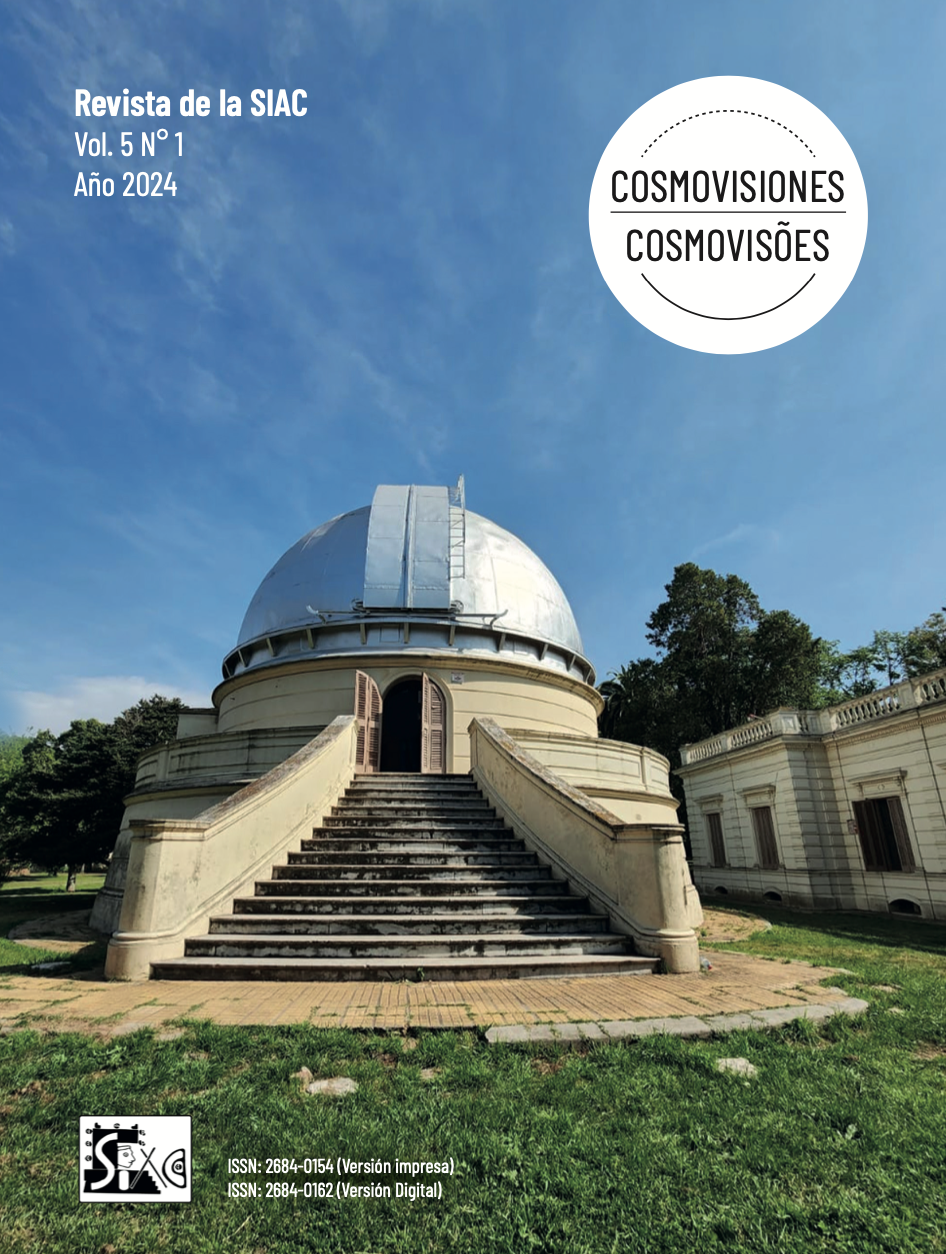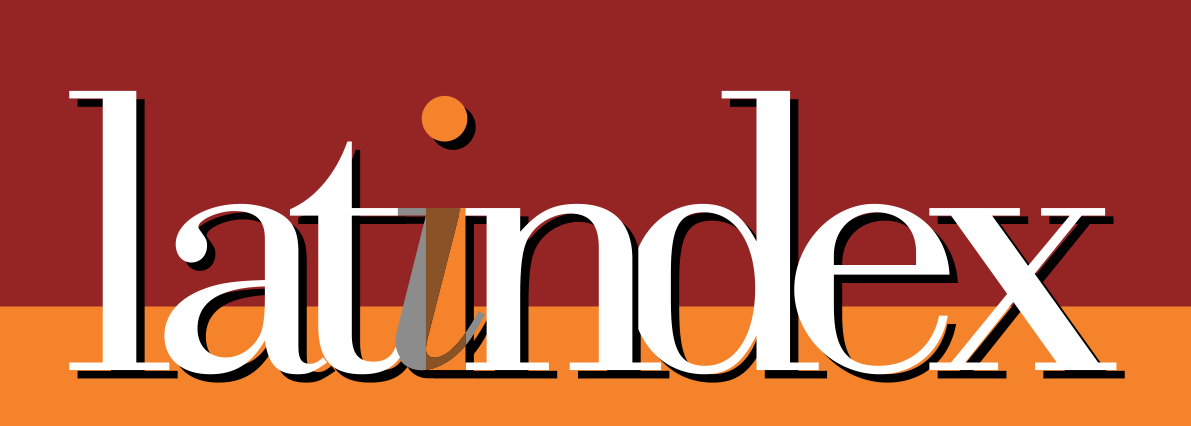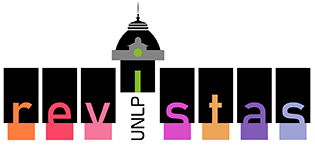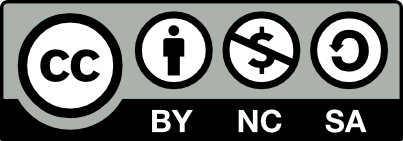Advanced Virtual Archaeoastronomy
DOI:
https://doi.org/10.24215/26840162e018Keywords:
Simulation, archaeoastronomy, virtual archaeology, serious gaming, simulation, ethnoastronomyAbstract
The free and open source desktop planetarium Stellarium is a multi-platform astronomy program that runs on a wide range of computers, from powerful desktop PCs to energy-efficient single-board computers such as the Raspberry Pi 3 and 4. The volunteer developers have finally reached their long-awaited "1.0" milestone, which marks both the completion of accuracy goals for astronomical ephemeris computations and the adaptation of a major update to the underlying programming framework, preparing the program for further development in the coming years.
Stellarium is a graphically detailed astronomy program that is popular with beginner to advanced amateur astronomers and astronomy teachers and students. It can immerse the observer in any location on Earth under the sky of any time in human history after 13,000 BC, surrounded by a landscape panorama that provides a reliable proxy for the real local landscape horizon. This allows the study of views from interesting human-made structures or other locations in relation to features on the horizon and celestial phenomena such as solstitial or lunar extremes. The diurnal tracks for these events and several other objects, as well as some other interesting auxiliary lines, can be easily highlighted using a dedicated program extension (plugin). Another extension even allows a 3D architectural model to be loaded in its surrounding landscape (created from image-based modelling, laser scanning or architectural reconstruction) under the sky of the original period to discover, investigate and demonstrate structural orientations towards astronomical targets and simulate light and shadow phenomena. Multi-phase reconstructions of landscape and architecture can also be visualised using the software's time control, which can control the visibility of model parts.
In cases where the application requires interaction with the three-dimensional reconstructions, such as astronomical observation instruments, Stellarium can be combined with a game engine such as Unity, which provides the necessary building blocks for computer game-like interaction with scene objects, while Stellarium provides the highly accurate sky background and astronomical time control.
The latest developments include a new skylight model that provides a much more realistic simulation of twilight and detailed ephemerides for eclipses provided by new contributors.
Stellarium is also capable of displaying constellations and star names from cultures around the world. This original feature has made it a popular tool for ethnoastronomy studies and outreach, and the Stellarium project welcomes qualified contributions from the community.
Downloads
References
Belmonte, J. A. (2015) Solar Alignments – Identification and Analysis. Ch. 32 in: Ruggles, C.L.N. (ed.), Handbook for Archaeoastronomy and Ethnoastronomy. New York: Springer Science and Business Media.https://doi.org/10.1007/978-1-4614- 6141-8_36.
Bruneton, E. and Neyret, F. (2008) “Precomputed Atmospheric Scattering”. In: Proceedings of the 19th Eurographics Symposium on Rendering 2008. Computer Graphics Forum 27(4), 1079–1086. Eurographics. Wiley.https://doi.org/10.1111/ j.1467-8659.2008.01245.x.
Frischer, B., Zotti, G., Mari, Z., and Capriotti Vittozzi, G. (2016) Archaeo-astronomical experiments supported by virtual simulation environments: Celestial alignments in the Antinoeion at Hadrian’s Villa (Tivoli, Italy). Digital Applications in Archaeology and Cultural Heritage (DAACH) 3, 55–79. https://doi.org/10.1016/j.daach.2016.06.001.
Hoffmann, S. M., and Wolfschmidt, G. (eds.) (2022) Astronomy in Culture – Cultures of Astronomy. (Proceedings of the Splinter Meeting at the Annual Conference of the Astronomische Gesellschaft). Nuncius Hamburgensis 57. Hamburg: tredition
Meier, L. (1992) Der Himmel auf Erden. Die Welt der Planetarien. Leipzig, Heidelberg: Johann Ambrosius Barth.
Qt (2023) https://www.qt.io/product/ framework. Consulted:15/01/2023.
Rodas Quito, E. E. and J. Mejuto González (2020) Constelaciones mayas: visualización e interpretación utilizando herramientas informáticas, in Ciencias espaciales 13(1), 73-87, Universidad Autónoma de Honduras, Tegucigalpa, Honduras.
Ruggles, C.L.N. (2015) Analyzing Orientations. Ch. 27 in: Ruggles, C.L.N. (ed.), Handbook for Archaeoastronomy and Ethnoastronomy. New York: Springer Science and Business Media. https://doi.org/10.1007/978- 1-4614-6141-8_26.
Smith, A. (2020) Horizon 0.13c. Online at http://agksmith.net/horizon/index.html Consulted:15/01/2023.
Vaz de Carvalho, C., Latorre Andrés, P. M., and Serón Arbeloa, F. J. (2013). Serious Games Network.Virtual Archaeology Re¬view 4(9), 174–180. https://doi.org/10.4995/ var.2013.4271.
Zotti, G., Wilkie, A., and Purgathofer, W. (2006) Using Virtual Reconstructions in a Planetarium for Demonstrations in Archaeo-Astronomy. In Sikné Lányi, C. (ed.), Third Central European Multimedia and Virtual Reality Conference (Proc. CEMVRC2006), 43–51, Veszprém: Pannonian University Press.
Zotti, G. (2014) Towards Serious Gaming for Archaeoastronomical Simulation. Mediterranean Archaeology and Archaeometry 14(3), 271–281. http://maajournal.com/Is-sues/2014/Vol14-3/Full25.pdf
Zotti, G. and Neubauer, W. (2015) Astronomical and Topographical Orientation of Kreisgrabenanlagen in Lower Austria. In Pimenta, F., Ribeiro, N., Silva, F., Campion, N., Joaquinito, A. and Tirapicos, L. (eds.), SEAC2011 Stars and Stones: Voyages in Archaeoastronomy and Cultural Astronomy, BAR International 2720, 188–193, Oxford: Archaeopress.
Zotti, G. (1016) Open-Source Virtual Archaeoastronomy. Mediterranean Archaeology and Archaeometry 16(4), 17–24. https:// doi.org/10.5281/zenodo.207260.
Zotti, G., Schaukowitsch, F., and Wimmer, M. (2018) Beyond 3D Models: Simulation of Temporally Evolving Models in Stellarium.Mediterranean Archaeology and Archaeometry 18(4), 523–528. https://doi. org/10.5281/zenodo.1477972.
Zotti, G. and Neubauer, W. (2019) Beyond the Landscape: Analysis of Neolithic Circular Ditch Systems of Lower Austria with Advanced Virtual Archaeoastronomy. Virtual Archaeology Review 10(21), 90–102. https:// doi.org/10.4995/var.2019.10772.
Zotti, G. (2019) Visualising skyscapes: GIS-based 3-D modelling and astronomical simulation. In Henty, L. and Brown, D. (eds.), Visualising Skyscapes: Material Forms of Cultural Engagement with the Heavens, Routledge Studies in Archaeology, 35–54. Routledge.
Zotti, G., Frischer, B., Schaukowitsch, F., Wimmer, M. and Neubauer, W. (2019) Virtual Archaeoastronomy: Stellarium for Research and Outreach. In Magli G., González-García, A. C., Belmonte Aviles, J., and Antonello, E. (eds.), Archaeoastronomy in the Roman World, Historical & Cultural Astronomy, chapter 12, 187–205. Springer International Publishing AG. https://doi. org/10.1007/978-3-319-97007-3_12.
Zotti, G. (2021) A Virtual Park of Astronomical Instruments. In Draxler, S., Lip¬pitsch, M. E., and Wolfschmidt, G. (eds.), Harmony and Symmetry (Proc. SEAC2018), volume 1 of SEAC Publications, 420–429. Hamburg: tredition.
Zotti, G., Frischer, B. and Fillwalk, J. (2020) Serious Gaming for Virtual Archaeoastronomy. Studies in Digital Heritage 4(1), 51–74. https://doi.org/10.14434/sdh. v4i1.31041.
Zotti, G. and Wolf, A. (2021) Some Thoughts on the Skycultures in Stellarium. In González-García A.C., Frank R.M., Sims, L.D., Rappenglück, M, Zotti, G., Belmonte, J.A., and Šprajc, I.(eds.), Beyond Paradigms in Cultural Astronomy (Proc. 27th SEAC conference held together with the EAA), BAR International 3033, ch. 11, 81–85. BAR Publishing.
Zotti, G., Hoffmann, S. M., Wolf, A., Chéreau, F. and Chéreau, G. (2021) The simulated sky: Stellarium for cultural astronomy research. Journal for Skyscape Archaeology 6(2), 221–258. https://doi.org/10.1558/ jsa.38690.
Zotti, G., Hoffmann, S.M., Vickers, D., Schultz, R., and Wolf, A. (2023) Revisiting Star Names: Stellarium and the Ancient-Skies Database. In: P. Maglova, A. Stoev (eds.): Cultural Astronomy & Ancient Skywatching. (Proc. 28th Annual Meeting of SEAC). 131-138. Plovdiv: Totem.
Downloads
Published
How to Cite
Issue
Section
License
Copyright (c) 2024 Georg Zotti, Wolfgang Neubauer

This work is licensed under a Creative Commons Attribution-NonCommercial-ShareAlike 4.0 International License.
Authors who publish in this journal agree to the following terms:
The authors retain intellectual authorship of the work and guarantee the journal the right to be the first publication of the work.
Authors may share the work with acknowledgment of authorship and the initial publication in this journal.
Authors may separately establish additional agreements for the non-exclusive distribution of the version of the work published in the journal (for example, placing it in an institutional repository or publishing it in a book), with an acknowledgment of its initial publication in this journal.
The journal offers free access ("open access") to all its content. The articles are available to be read, downloaded, copied, printed and/or researched according to the Creative Commons license: CC BY-NC-SA (Attribution - Non-Commercial - Share Alike-4.0 International)

The content of the journal is fully available from its publication. Readers are required to correctly cite the journal and the author of the downloaded content
















